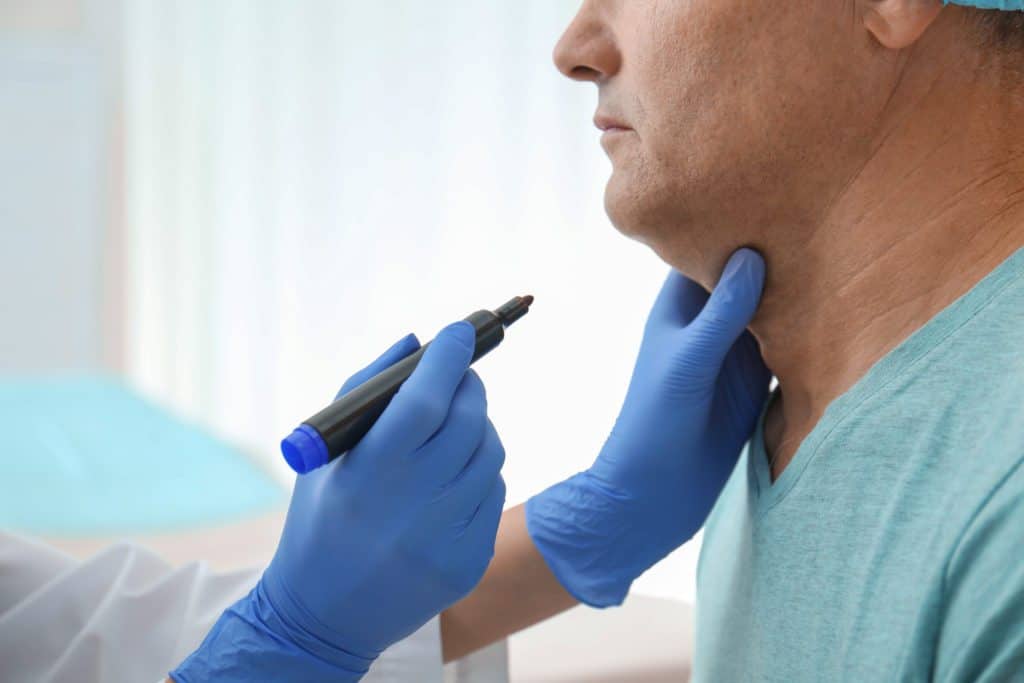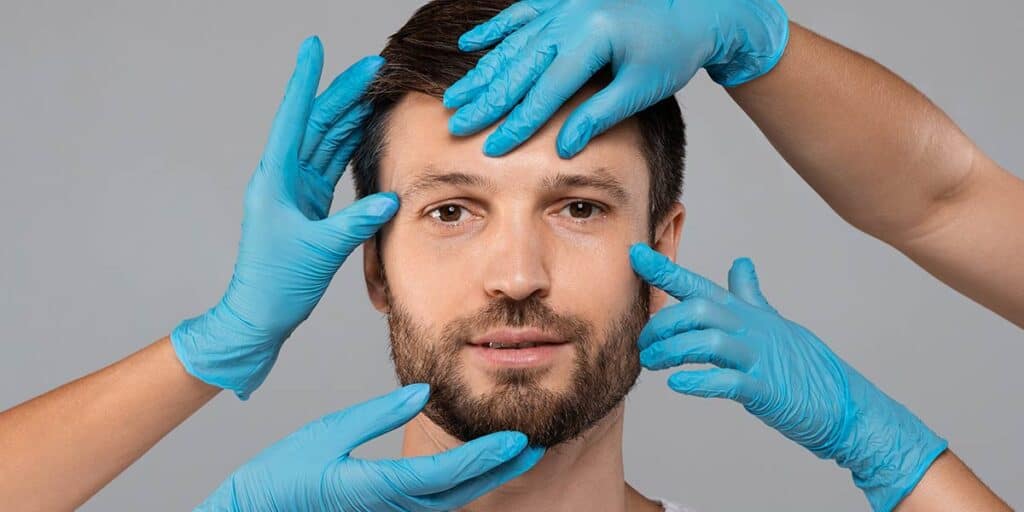The male facelift is unique since it must take into account many of the gender specific nuances and precautions inherent to men. First, the shape of the male face is quite different than the female. Whereas the female face should be heart shaped with a narrow lower and wider upper lateral dimension, the male face is square in shape with a bold lower lateral jawline and less generous upper lateral dimension. In addition, the temporal hair line is drastically different than the females. In women, the temporal hairline is rounded at the hairline, where as in the males a strong side burn is evident by a square shape. Then, facial and neck hair and even the hairlines must be considered. When pulling the facial skin up and out, it is critical to align the facial beard line with the side burns. Furthermore, it is critical to avoid pulling the facial hair containing skin up and onto the ear. Finally, it is important to acknowledge that most men wear their hair short, so any surgical incision lines will be more apparent. This is most important in the posterior hairline where women can have their incision line extended into the back of the hair whereas in men it needs to be kept anterior to the hairline to avoid any distortion of the hairline. In women any hair loss, termed alopecia, can be hidden with long locks of hair whereas in men any loss of hair cannot be covered by short hair.
Male facelift preoperative planning is also unique when compared to women. Preoperative planning of male facelift patients requires recognition of their facial and neck hair. First, they are instructed to shave only two days before their surgery. This is done so that there is only a shadow of their beard line present. This little bit of facial stubble allows the facelift surgeon to align the hairline with the sideburn following pulling up of the facial skin. Yet, growing out your facial and neck hair is not advocated. This is because the stronger male hair follicles require a more robust blood flow to maintain. In fact, as the hair follicles get larger and longer, the microvasculature in the skin gets larger as well. Unfortunately, a stronger and vascular flow and larger caliber blood vessels means a higher propensity for vessel irritation and postoperative oozing. Undue vascular irritation and oozing can result in undesirable blood pooling, called a hematoma. Since, hematomas are the most common complication following facelift surgery, men are typically associate with higher complication rates when compared to women. In order to avoid hematomas, it is critical to avoid elevation of blood pressures in men. This is why men are offered an additional protection from high blood pressure, called hypertension, with a single dose of a Clonidine patch, a blood pressure controlling medication.


